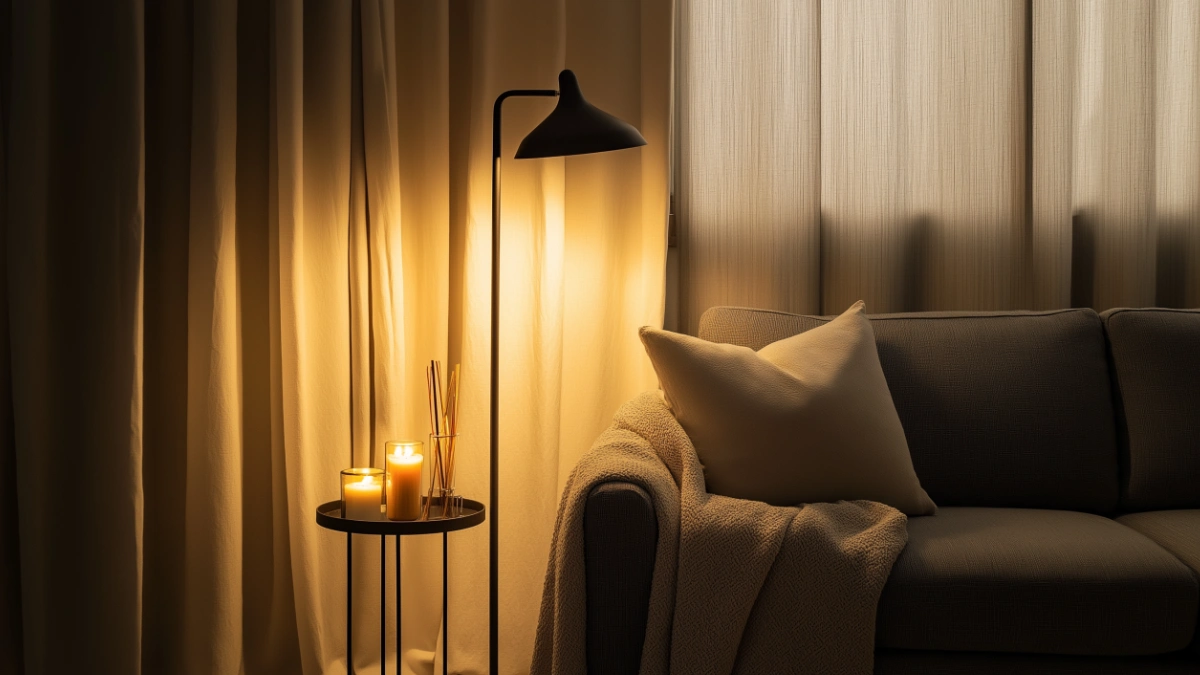Scandinavian Living Room Designs: Embrace Cozy and Minimalist Trends for a Serene Space
Table of Contents
Simplicity, warmth, and intentional design—these are the hallmarks of Scandinavian living room aesthetics. Originating from the Nordic countries of Denmark, Sweden, and Norway, the Scandinavian design movement has transcended its regional roots to become one of the most beloved interior styles around the world. In fact, a recent global design trend report revealed that Scandinavian-inspired spaces are among the top five most searched living room styles across home décor platforms.
Why the global fascination? The answer lies in the harmonious balance that Scandinavian living room designs achieve: they are minimalist yet inviting, functional yet beautiful. Whether you live in a compact apartment or a spacious home, Scandinavian design principles help create an environment that feels calm, clutter-free, and effortlessly chic.
In this guide, we’ll explore the key features of Scandinavian living room design, from muted color palettes to natural materials and layered textures. You’ll find ideas for layout, furniture, lighting, and decor, along with expanded tips to bring these cozy and minimalist trends into your own home. Whether you’re doing a full renovation or small seasonal update, this post offers inspiration that feels both timeless and modern.
The Foundation of Scandinavian Style: Color Palettes and Materials
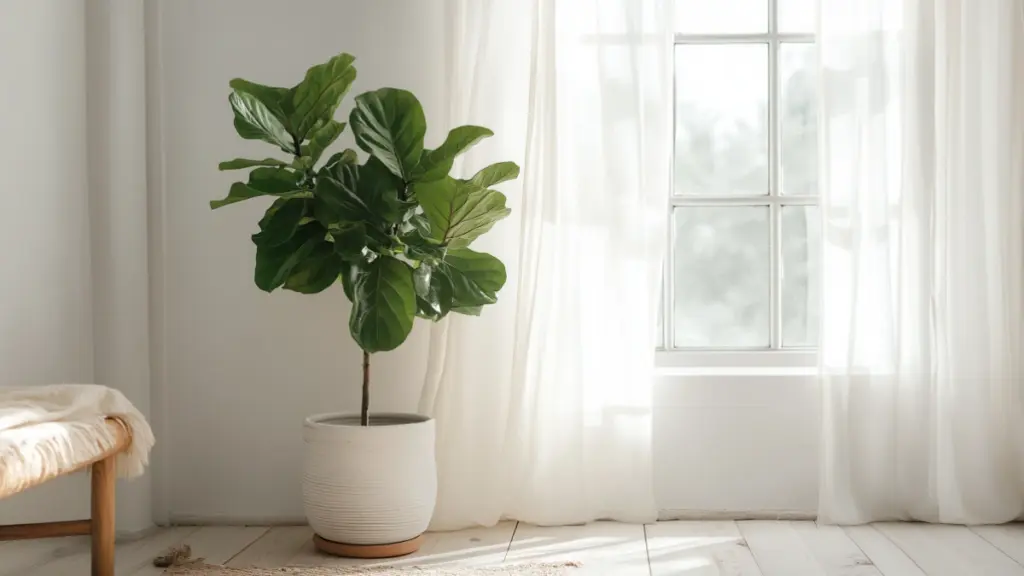
Scandinavian living rooms are often grounded in light, airy color schemes that reflect the natural landscape of the Nordic region. Think soft whites, gentle grays, warm beiges, and pale woods—all working together to create a sense of serenity. These colors not only make the space feel more open but also serve as the perfect backdrop for layering textures and décor.
Natural materials are central to Scandinavian interiors. Oak floors, wool throws, linen curtains, and stone accessories add warmth to otherwise minimal environments. The focus is on authenticity—materials that feel real and age gracefully.
Table – Key Color and Material Elements in Scandinavian Design
| Element | Common Features |
|---|---|
| Primary Colors | Soft whites, cool grays, warm neutrals |
| Accent Colors | Earth tones, muted blues, black |
| Flooring | Light oak, white-washed wood |
| Textiles | Wool, linen, sheepskin, cotton knits |
| Accessories | Ceramic, raw wood, matte black metal |
Furnishing the Scandinavian Living Room: Less is More
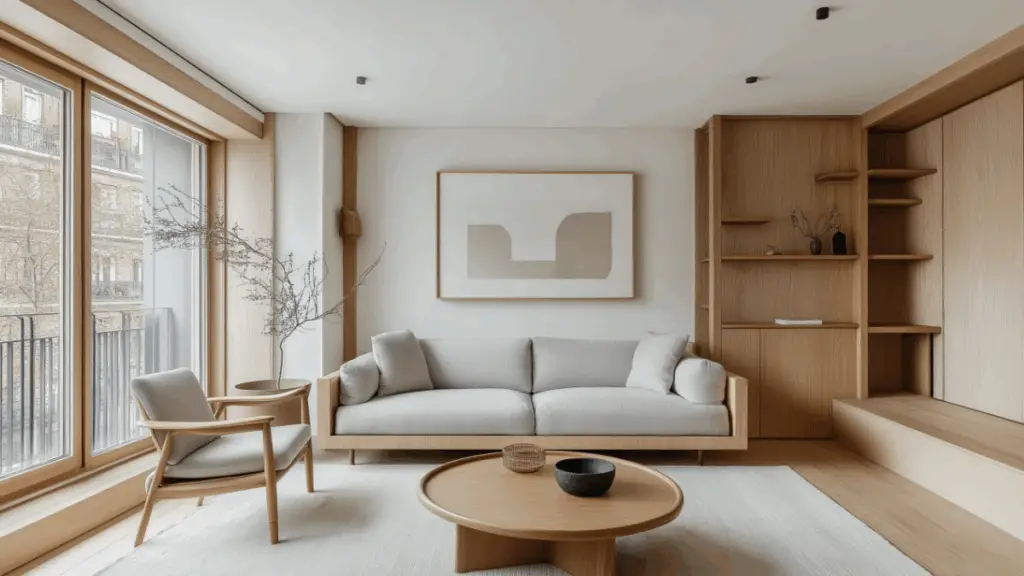
In Scandinavian living room design, furniture is chosen with function and form in mind. Clean lines, low profiles, and a mix of modern and mid-century shapes dominate the aesthetic. Every piece should serve a purpose while contributing to the overall sense of calm and simplicity.
Sofas are often streamlined with neutral upholstery, complemented by natural wood coffee tables or minimalist shelving. Instead of overcrowding the space with decorative objects, Scandinavian interiors favor a curated selection of high-quality pieces.
Table – Scandinavian Furniture Features
| Furniture Type | Typical Characteristics |
|---|---|
| Sofa | Neutral tones, slim arms, soft cushions |
| Coffee Table | Light wood, simple shapes, open underneath |
| Side Chairs | Mid-century style, woven or leather seats |
| Shelving | Floating shelves, open wood frames |
| Storage Solutions | Built-ins, woven baskets, minimal cabinetry |
Layering Textures for That Cozy Hygge Feel
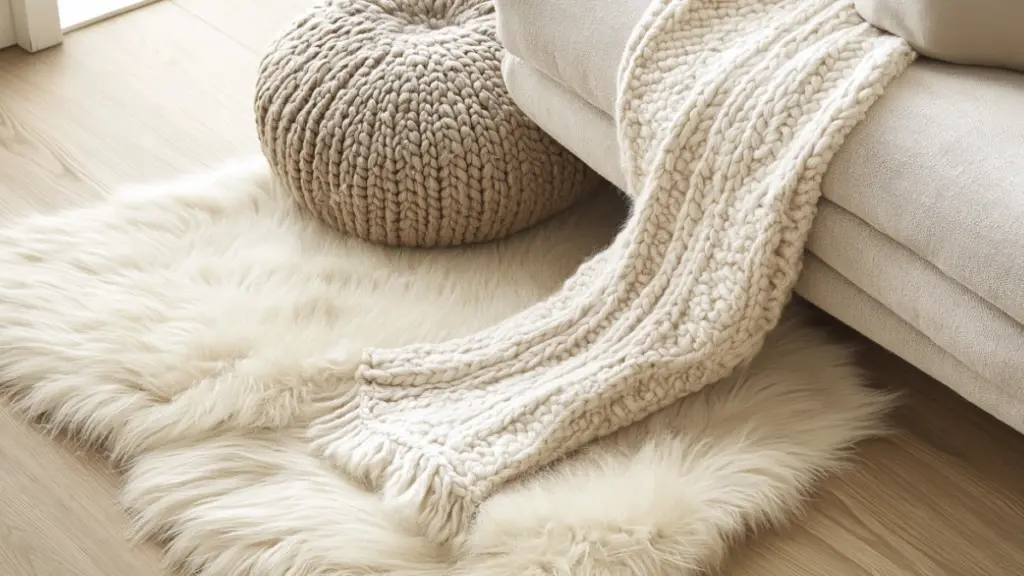
A major element that distinguishes Scandinavian living rooms from other minimalist styles is the concept of hygge—a Danish word meaning coziness and contentment. This feeling is achieved by layering different textures throughout the space.
Add a sheepskin rug to your hardwood floor, toss chunky knit blankets over your sofa, and include cushions in varying fabrics like velvet, linen, and cotton. The goal is to make the room visually and physically comforting without sacrificing the clean aesthetic.
Table – Texture Combinations for Cozy Effect
| Texture Type | Where to Use It |
|---|---|
| Sheepskin | On chairs, ottomans, or bench seating |
| Chunky Knit Throws | Draped casually over the sofa |
| Linen Curtains | To soften window light and frame the room |
| Woven Baskets | For storing throws or magazines |
| Wool Rugs | Under coffee tables for tactile warmth |
Lighting in Scandinavian Design
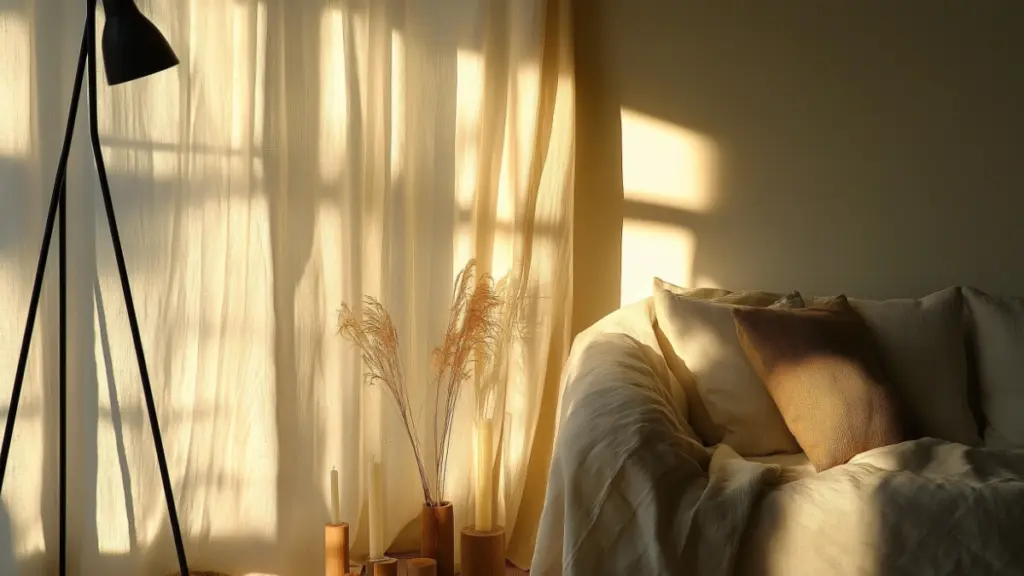
Given the long, dark winters in the Nordic region, lighting is a crucial component in Scandinavian living room designs. The goal is to maximize natural light during the day and create soft, layered lighting during the evenings.
Start by allowing as much daylight as possible into the space. Avoid heavy drapes and opt for sheer linen or cotton curtains that let light pass through. When it comes to artificial lighting, a mix of ambient, task, and accent lighting creates a warm and inviting atmosphere.
Pendant lights made of natural materials or minimalist black metal are popular overhead choices. Floor lamps with adjustable arms add reading light and sculptural interest. Wall sconces and table lamps contribute to cozy corners without overwhelming the room.
Table – Types of Lighting in a Scandinavian Living Room
| Lighting Type | Function | Ideal Placement |
|---|---|---|
| Pendant Light | Ambient lighting | Above coffee table or central ceiling |
| Floor Lamp | Task + accent lighting | Beside sofa or reading chair |
| Table Lamp | Warm glow, localized lighting | On side tables or shelving |
| Wall Sconce | Accent + architectural interest | Near bookshelves or gallery walls |
| Candles | Hygge atmosphere | Grouped on trays or windowsills |
Lighting in Scandinavian spaces isn’t just about brightness—it’s about creating mood and making everyday life feel more beautiful.
Greenery and Organic Touches to Bring the Room to Life
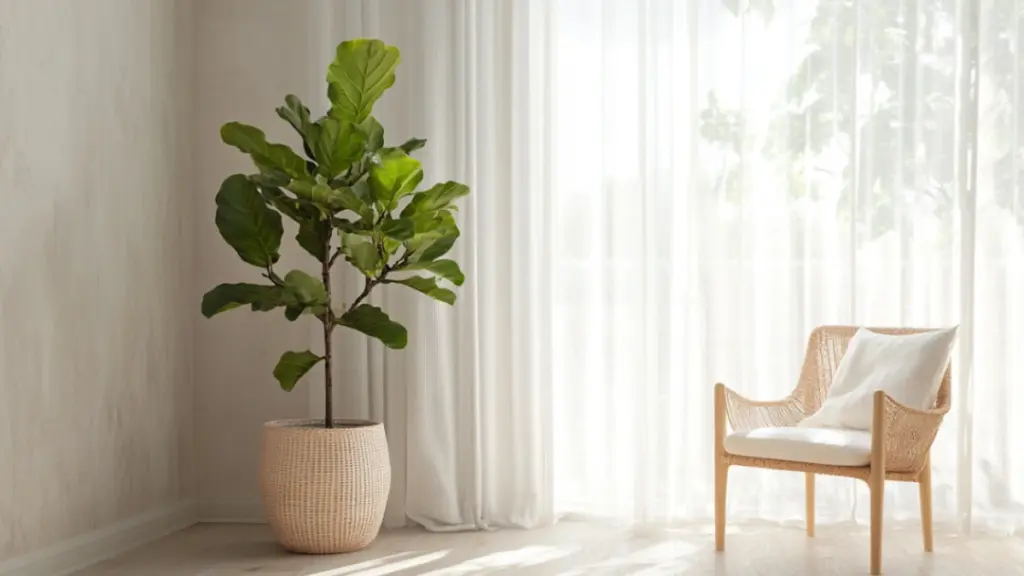
Though minimalist, Scandinavian interiors are never sterile. One way they achieve vibrancy is through natural greenery. Indoor plants, fresh-cut flowers, and even twigs in a ceramic vase bring a sense of life and calm into the living room.
Opt for low-maintenance plants like fiddle leaf figs, rubber trees, or hanging pothos. Place them in simple terracotta, matte ceramic, or woven planters that blend with your overall aesthetic. Even a single eucalyptus stem can elevate a coffee table.
Table – Popular Plant Options for Scandinavian Living Rooms
| Plant Type | Visual Appeal | Care Level |
|---|---|---|
| Fiddle Leaf Fig | Tall, architectural foliage | Moderate |
| Snake Plant | Sleek, vertical leaves | Low maintenance |
| Rubber Tree | Glossy, deep green leaves | Moderate |
| Pothos | Cascading vines | Easy to grow |
| Eucalyptus (cut) | Fresh scent, elegant shape | Replace weekly |
Creating a Functional Yet Beautiful Layout
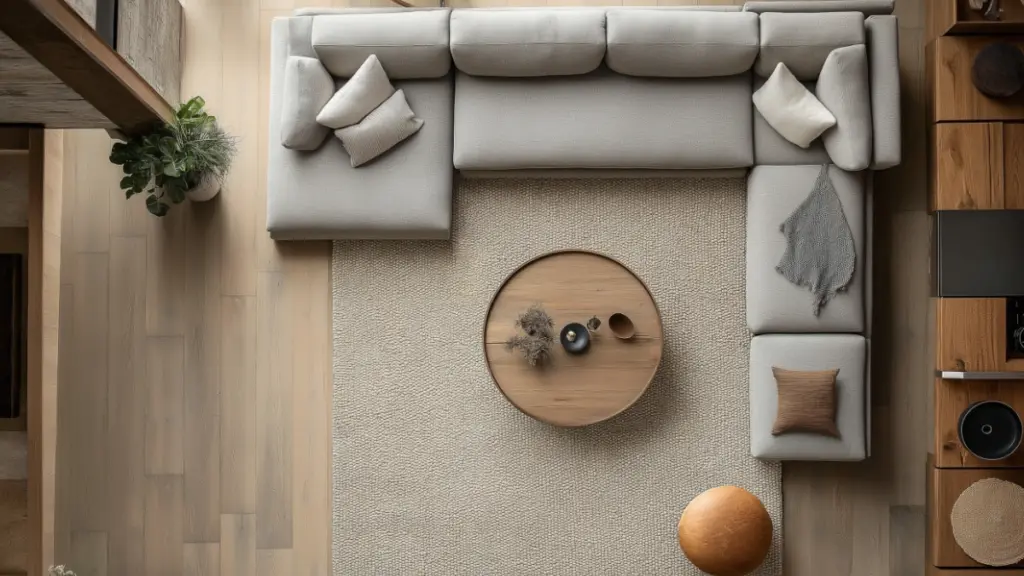
A Scandinavian living room is never cluttered—but it is always functional. Whether you’re working with a small studio or a spacious open-plan home, layout matters. The goal is to promote flow and comfort while maintaining a clean visual line.
Start with your seating area. Arrange the sofa and chairs around a central coffee table, keeping pathways open. Add floating shelves or wall hooks to minimize bulky storage. A Scandinavian space often favors modular or multi-use furniture, such as a bench that doubles as storage or a side table that also serves as a stool.
Table – Scandinavian Layout Principles
| Design Element | Function | Style Tip |
|---|---|---|
| Central Seating Area | Social and visual anchor | Use a round coffee table for soft edges |
| Floating Furniture | Opens up small spaces | Leave breathing room between walls/furniture |
| Wall-Mounted Storage | Keeps floor space clear | Choose natural wood tones for warmth |
| Modular Pieces | Adapts to changing needs | Opt for lightweight materials |
A well-planned layout makes a minimalist living room feel expansive rather than empty.
Styling Tips to Personalize Your Scandinavian Space
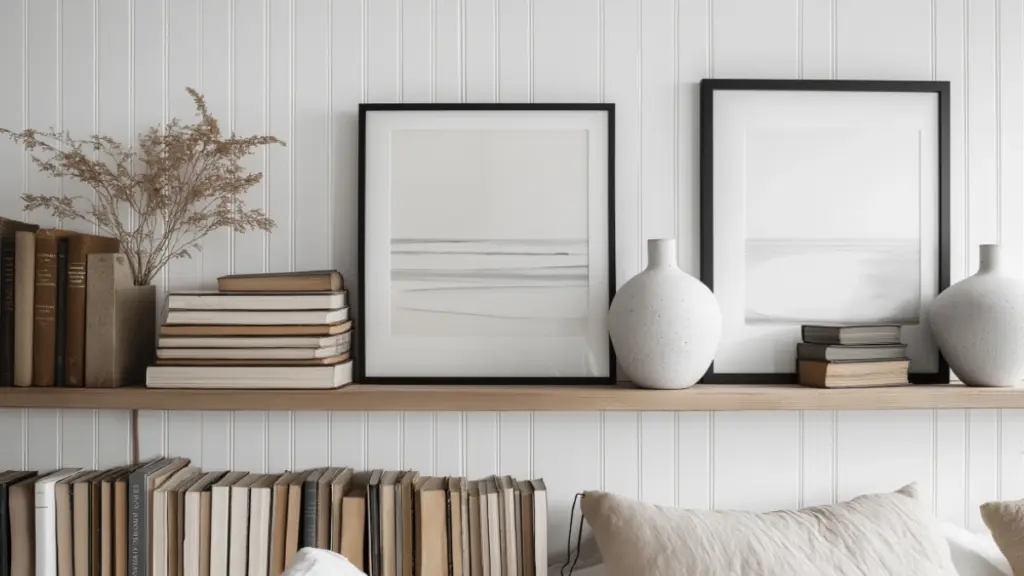
Scandinavian design is minimalist, but that doesn’t mean impersonal. Styling is where your space comes to life—adding character through carefully chosen pieces that reflect your lifestyle and taste.
Start with a neutral base and introduce personality through art, books, and personal mementos. A gallery wall in black and white photography, abstract prints, or even pressed botanicals adds subtle intrigue without overwhelming the space. Be intentional with your choices—less is more, but each item should have presence.
Bookshelves can showcase more than just novels—think artisan pottery, candles, and framed postcards. Keep surfaces clear but styled: a ceramic tray on your coffee table with a candle, book, and dried floral arrangement is quintessential Scandinavian.
Seasonal swaps are another styling strategy. In colder months, layer with thicker throws, extra candles, and earthier tones. Come spring, switch to lighter fabrics and add a vase of fresh tulips.
Table – Personal Touches in Scandinavian Design
| Styling Element | Example Use |
|---|---|
| Wall Art | Minimalist prints, line drawings, framed botanicals |
| Coffee Table Styling | Tray, candle, art book, ceramic vase |
| Shelf Decor | Neutral ceramics, natural textures, clean lines |
| Seasonal Decor | Cozy knits in winter, fresh florals in spring |
| Textiles | Switch pillow covers or throws for a quick update |
Scandinavian living room styling is about balance—between function and flair, restraint and warmth.
Conclusion
Scandinavian living room designs invite you to embrace both comfort and clarity. With their neutral tones, natural textures, and functional beauty, they create spaces that feel effortlessly calm, yet deeply personal. Whether you’re drawn to the minimalism, the hygge warmth, or the timeless aesthetic, this design approach adapts easily to any lifestyle.
By grounding your space in natural materials, layering textures thoughtfully, and styling with intention, you can bring the essence of Scandinavian living into your home—one peaceful corner at a time.

